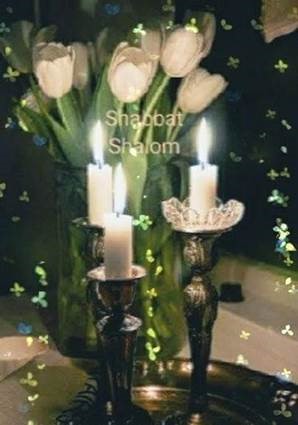
by Phyllis Chesler
Last Shabbat, my eldest granddaughter Lily (Aviva Chaya) celebrated her thirteenth birthday and became Bat Mitzvah; there she stood, leading services on erev Shabbat, leading them again on Shabbat morning, leyning the maftir, leyning the haftorah, and delivering a very smart drash on Kedoshim.
Long, long ago and far away (or so it seems) even though it was only thirteen years ago, I delivered a d’var Torah on this very parsha, exactly one day after she was born. I just re-read it, sighed, and decided to share a part of that work today. May I be forgiven for not attempting to go further or deeper or to take an entirely different path for us at this moment in time.
This is a difficult parsha. In teaching us about the many and specific laws of purity and impurity, and especially about the requirements of purity for our priestly caste, this parsha describes some heartbreakingly barbaric punishments for sins, such as being stoned by the entire congregation or being burned alive. Did Jews once actually do this?
What can one say?
Actually, quite a lot.
In terms of the death penalty, the Mishna (Makkot 1:10) has been famously quoted as saying that “A Sanhedrin that executes once in seven years is called murderous. Rabbi Eliezer b. Azariah says: ‘Once in seventy years.’ Rabbi Tarfon and Rabbi Akiva say: ‘Had we been members of a Sanhedrin, no person would ever be put to death.’ Rabban Shimon ben Gamliel remarks: ‘They would also multiply murderers in Israel.'” The Gemara, in Tractate Sanhedrin, wrestled with this long ago. The rabbis insist that these punishments were never carried out, that they are here in order to teach us certain lessons.
In Emor 24:10-16, we learn that the unnamed son of a Jewish woman, whose name we are given, Shlomit bat Divri, of the tribe of Dan, is also the son of an unnamed, possibly dead, possibly evil, possibly convert, Egyptian father. The son quarrels with a Jewish man (perhaps about his place in the camp because, as the son of an Egyptian father, he may have been treated as a semi-outcast). The Ramban suggests that the Egyptian father may also have converted to Judaism and followed Shlomit into exile. But, the question still arose: Where does this unnamed man belong? Where can he pitch his tent? Is he or is he not a full member of his mother’s tribe, a Danite? Does his mother, a woman, have inheritance rights among her father’s people?
The Jews of Emor including Shlomit are not yet ready for Bnot Tzlophchad, who have yet to claim their future inheritance rights in their father’s name.
Shlomit’s son is heard to use God’s name in a blasphemous way; we are not told what he said, exactly. Nevertheless, for this sin, God instructs Moshe to have those who directly heard him blaspheme put their hands on his head, after which the entire congregation must stone him to death. However, immediately afterwards (24:17), we are also told that “any man who kills any human being must surely be put to death.” This is certainly a cautionary admonition both towards those who charge blasphemy and towards those who carry out the punishment for it.
In any event, either such practices were never carried out—or ceased long ago. As Jews, we have evolved away from such savagery. We do not stone blasphemers, we do not burn allegedly sexually active women—or do we? In what sense might some Jews still behave as if they are vaulting backwards in time, right over rabbinic Judaism, and situating themselves as if they lived in parsha Emor?
I again ask: Do Jews today actually commit barbaric acts against each other— for perceived blasphemy? If we do, may God forgive us.
Shabbat Emor Shalom.
- Like
- Digg
- Del
- Tumblr
- VKontakte
- Buffer
- Love This
- Odnoklassniki
- Meneame
- Blogger
- Amazon
- Yahoo Mail
- Gmail
- AOL
- Newsvine
- HackerNews
- Evernote
- MySpace
- Mail.ru
- Viadeo
- Line
- Comments
- Yummly
- SMS
- Viber
- Telegram
- Subscribe
- Skype
- Facebook Messenger
- Kakao
- LiveJournal
- Yammer
- Edgar
- Fintel
- Mix
- Instapaper
- Copy Link








